By Babak Taghvaee
California is one of the most fire-prone states in the United States. Government agencies and military forces in the state have been equipped with firefighting planes and helicopters for decades.
Typically, during the winter, this equipment undergoes periodic maintenance to be ready for the summer fire season. In January 2025, the California Department of Forestry and Fire Protection (Cal Fire), the largest wildland firefighter in the state, had many of its air tankers under repair. Therefore, when faced with one of the largest wildland fires in American history, the California National Guard and other state National Guards made up for the shortage of firefighting planes and helicopters by grounding a significant number of its aircraft.
For decades, the California National Guard has provided air assets to assist Cal Fire and other state agencies in combating large-scale wildfires. On January 9, 2025, two helicopters from the U.S. Air National Guard (USANG) joined firefighting operations, and the following day, January 10, ten helicopters from the U.S. Army National Guard (USARNG) participated in the efforts around Los Angeles. On January 11, 2025, eight C-130H-3/J-30 tactical transport aircraft from the USANG and the U.S. Air Force Reserve (USAFR), each equipped with Modular Airborne Firefighting System II (MAFFS II) firefighting modules, were deployed to the front lines. This report provides an in-depth analysis of the role played by National Guard helicopters in fighting the wildfires in Southern California during January 2025.
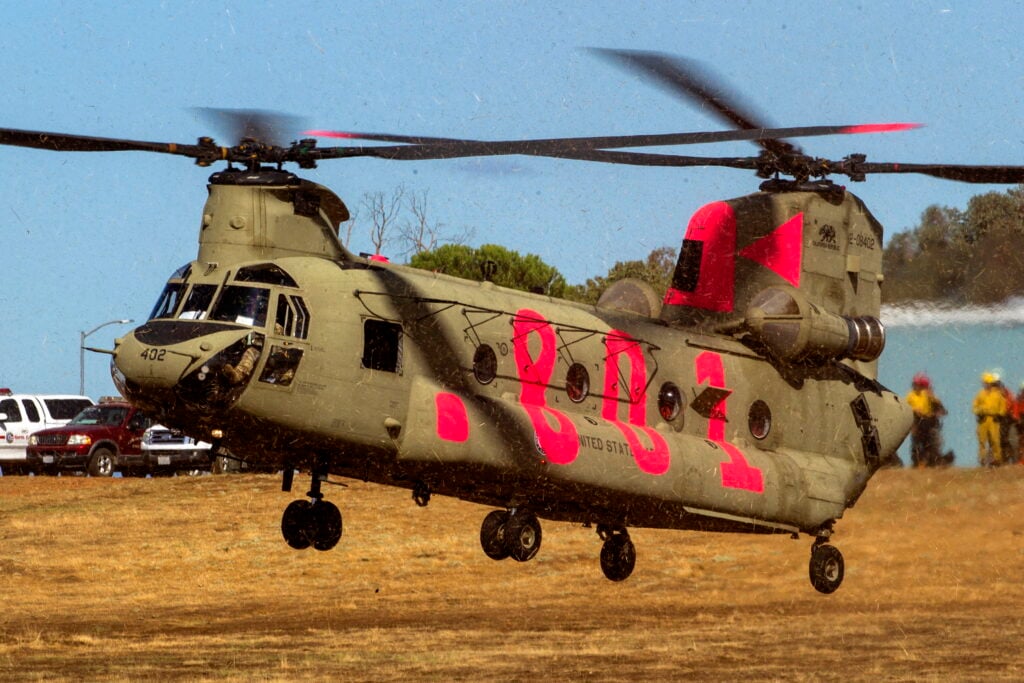
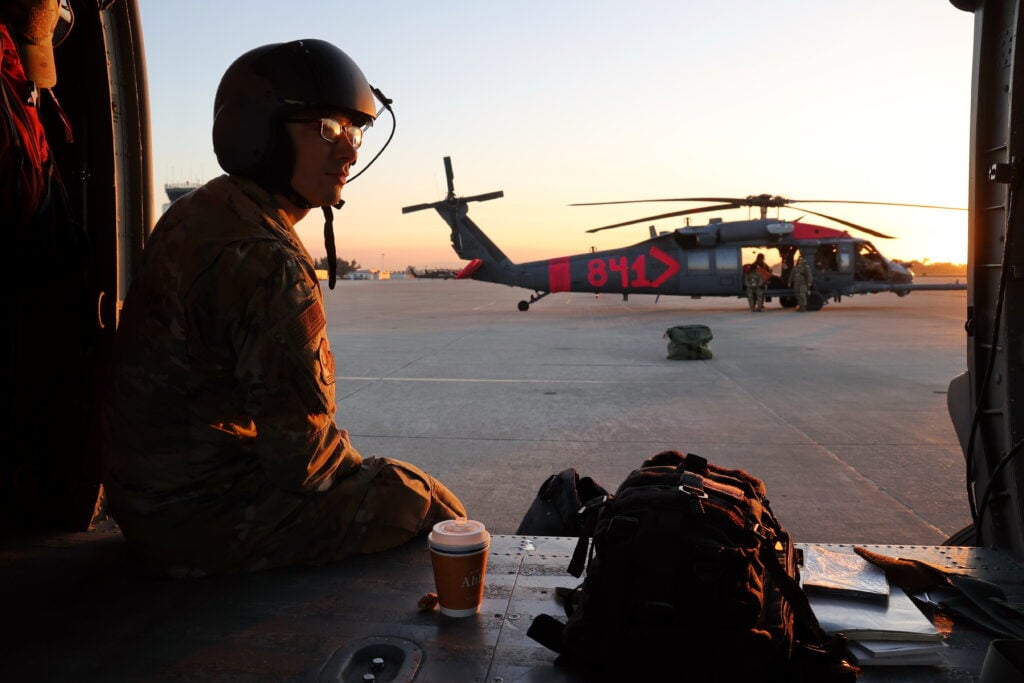
Lack of Airworthy Helicopters in Cal Fire's Service
The destructive wildfires in Southern California began on January 7, 2025. Drought conditions, low humidity, a buildup of vegetation from the previous winter, and the Santa Ana winds worsened them. As of January 26, 2025, when this report was completed, they had destroyed or damaged over 16,000 structures, killed 28 people, and displaced 200,000 others. The financial loss from the damages in the first two days was estimated to be USD 20 billion, which later exceeded USD 225 billion in just a week. The damage and economic losses from these wildfires surpassed those of Hurricane Harvey in 2017 ($230 billion) and Hurricane Helene in 2024 ($225 billion)!
The Southern California wildfires that began on January 7, 2025, affected various regions at different times. As of January 26, these fires could be divided into five groups based on their dates and the regions they affected. The Palisades Fire in the Santa Monica Mountains of Los Angeles County started on January 7; the Eaton fire in the Altadena area of Los Angeles County began on January 7; the Hughes Fire near Lake Hughes Road near Castaic Lake started on January 22; the Border 2 Fire in the Otay Mountain area of San Diego County, two miles north of the U.S.–Mexico border started on January 23; and the Laguna Fire in Ventura County began on January 23, 2025.
The windstorm that caused the massive wildfires began on January 6, 2025. It was anticipated that this storm would lead to massive wildfires, prompting California Governor Gavin Newsom to announce that he would assign 65 fire engines, seven helicopters, seven water tenders, and 109 workers to fight the wildfires. However, it quickly became evident that the small number of firefighting assets was insufficient to combat the Palisades and Eaton fires within 48 hours of their start, as wind speeds of 80 to 100 mph (130 to 160 km/h; 36 to 45 m/s) expanded the affected areas into residential areas.
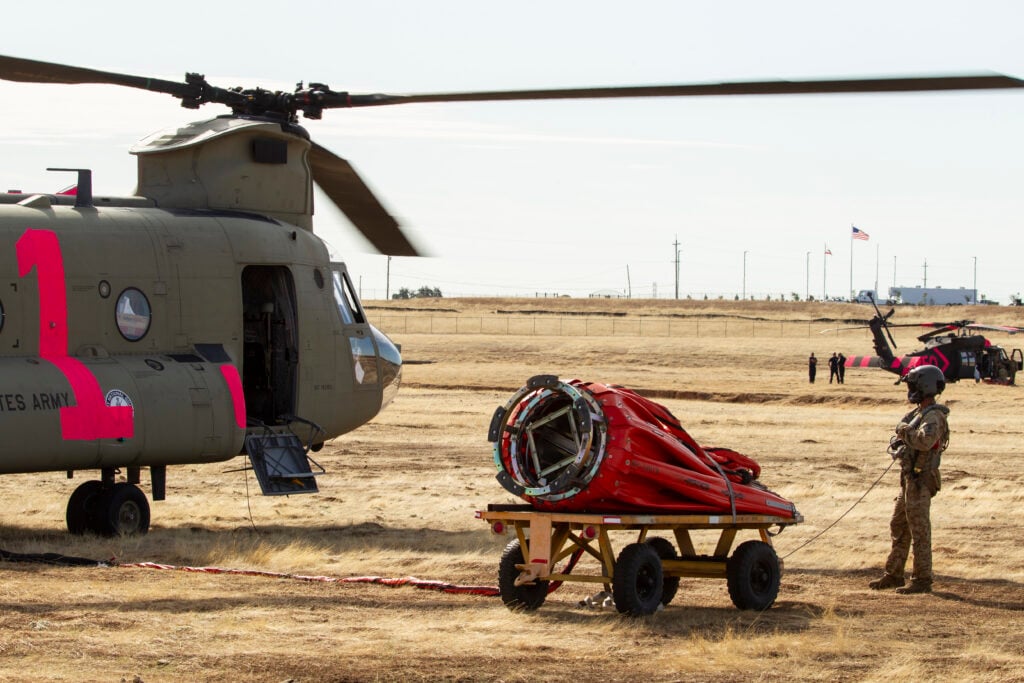
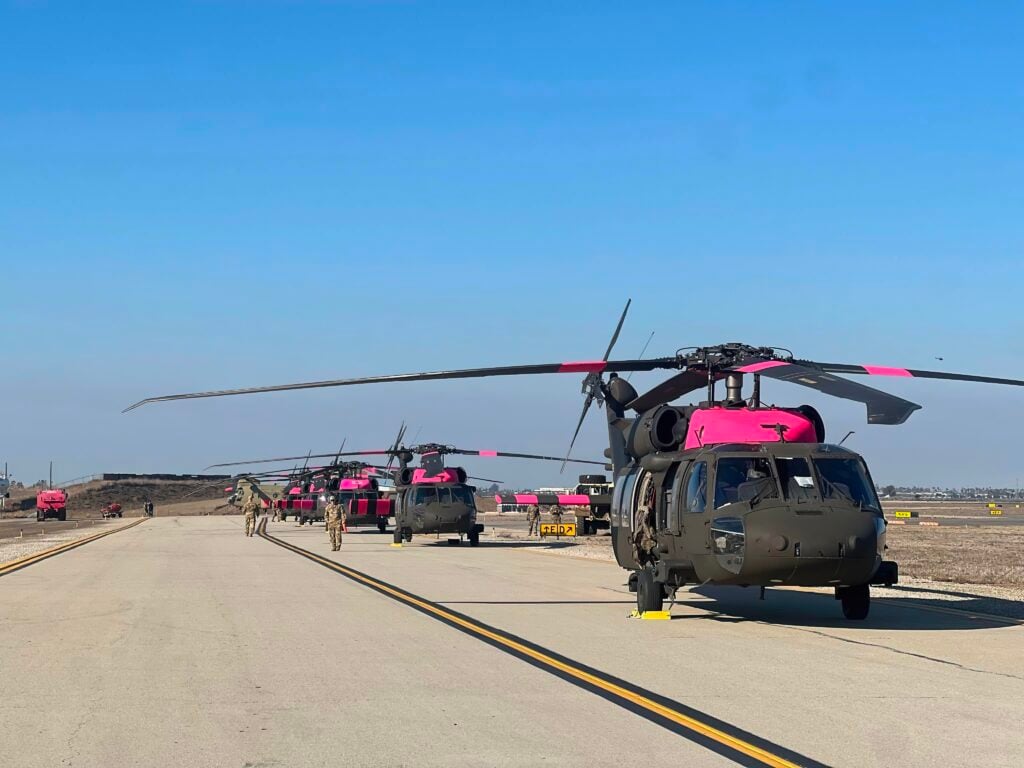
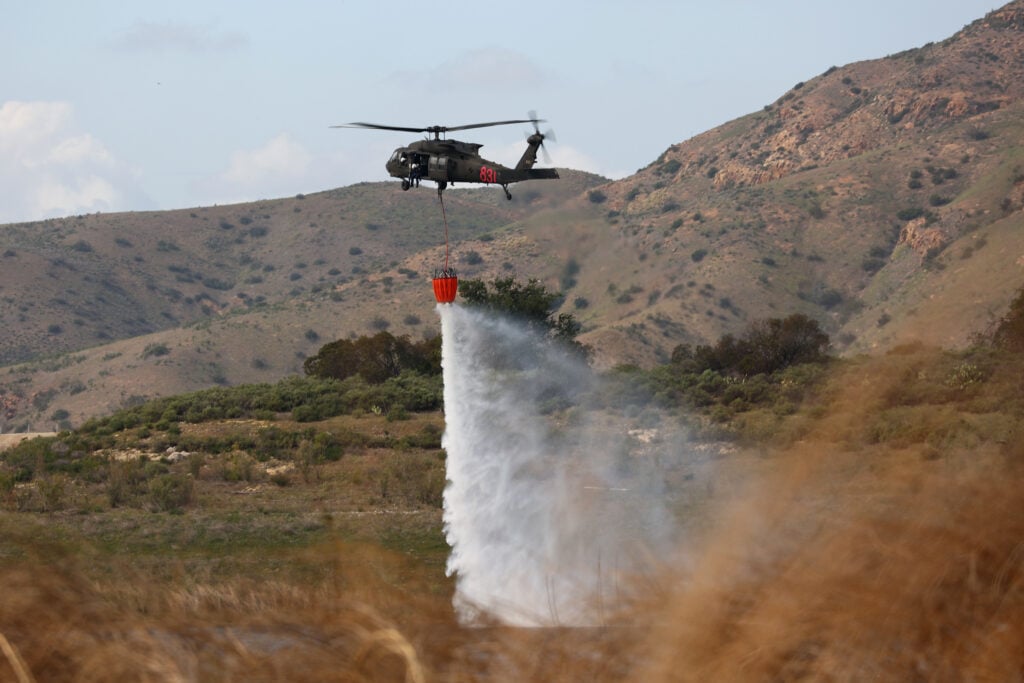
According to information on flight tracking websites, almost half of the 70 aircraft in Cal Fire's fleet were airworthy and available for firefighting operations. During the initial days of the fires, when flights of firefighting aircraft were not possible due to high-speed winds, most of the Cal Fire helicopters were either under maintenance or in storage. Its helicopter fleet consists of 27 helicopters in Cal Fire's fleet (12 UH-1H/EH-1H/X Huey Type II helicopters and 15 modern S-70i Firehawk Type I helicopters). The same situation applied to its fixed-wing fleet, as most aircraft were grounded due to maintenance and modification work.
Between 2019 and 2025, Cal Fire received 15 PZL Mielec-built S-70i Firehawk helicopters from United Rotorcraft, a division of Air Methods Corporation. Manufactured in Poland by Lockheed Martin's Polish partner, PZL Mielec, each of the S-70s underwent modifications by United Rotorcraft to carry a water tank system, custom cabin interior, and cockpit controls following an order from Cal Fire by United Rotorcraft in Denver. These Firehawks gradually replaced the Bell UH-1H, EH-1H, and EH-1X Huey helicopters in Cal Fire's fleet. With the delivery of the Polish S-70is, three ex-USAR UH-1Hs, seven EH-1Hs, and two EH-1Xs were mainly stored at Cal Fire's headquarters at Sacramento airport. Only during fire season were six to eight of them activated to support the S-70is.
In January 2025, when the wildfires began in Los Angeles County, Cal Fire had only nine of its 15 S-70is airworthy, with one (N477DF) used for crew training in Sacramento, while the remaining eight (N451DF, N476DF, N478DF, N479DF, N482DF, FN484DF, FN485DF, and N487DF) were deployed. To compensate for the lack of S-70is, two out of three airworthy EH-1Hs in Cal Fire's fleet were sent to Los Angeles. N497DF, deployed at Rohnerville Air Attack Base, and N491DF, present in Sacramento when the fires began, were the two EH-1Hs sent. N497DF was flown back to Sacramento on January 10 and then deployed to Camarillo airport with refueling stops in Fresno and Porterville, while N491DF arrived at Camarillo on January 11 and joined the S-70is that had been there since January 7 and 8. The two EH-1Hs and the eight S-70is later flew to San Diego and participated in firefighting operations at Otay Mountain near the US-Mexico border starting on January 22.
Compared to Huey helicopters, Firehawks can carry more water or fire retardants. The UH-1H/EH-1Hs can hold 324 gallons of water/foam in a Bambi bucket or 360 gallons of water/foam with pilot-controlled drop volumes in a fixed tank due to the limited power of their Lycoming T-53-703 turboshaft engine (maximum power of 1343 kW/1,800 shp), while the S-70i Firehawks, equipped with a pair of General Electric T700-GE701D turboshafts (each with a maximum power of 1,488 kW/1,994 hp), each has a fixed tank for 1000 gallons of water/foam with pilot-controlled drop volumes.
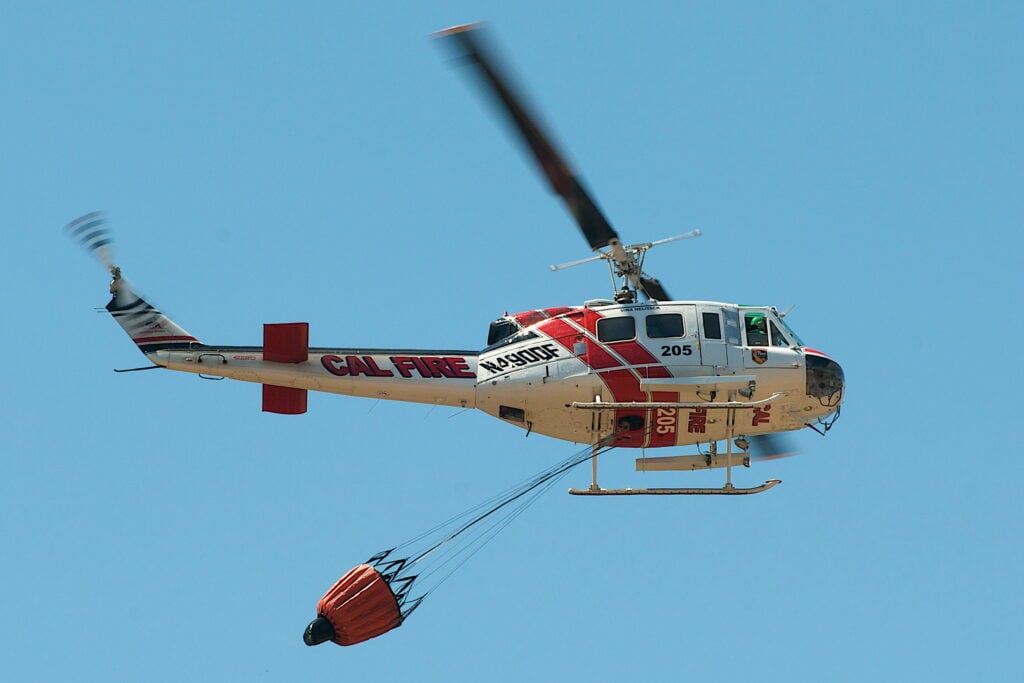
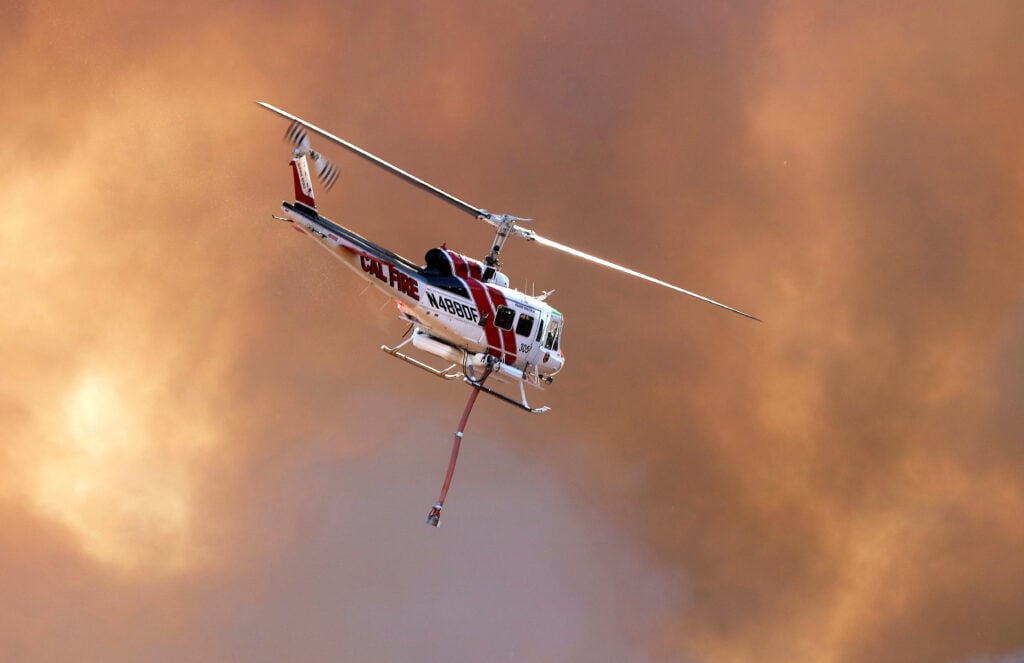
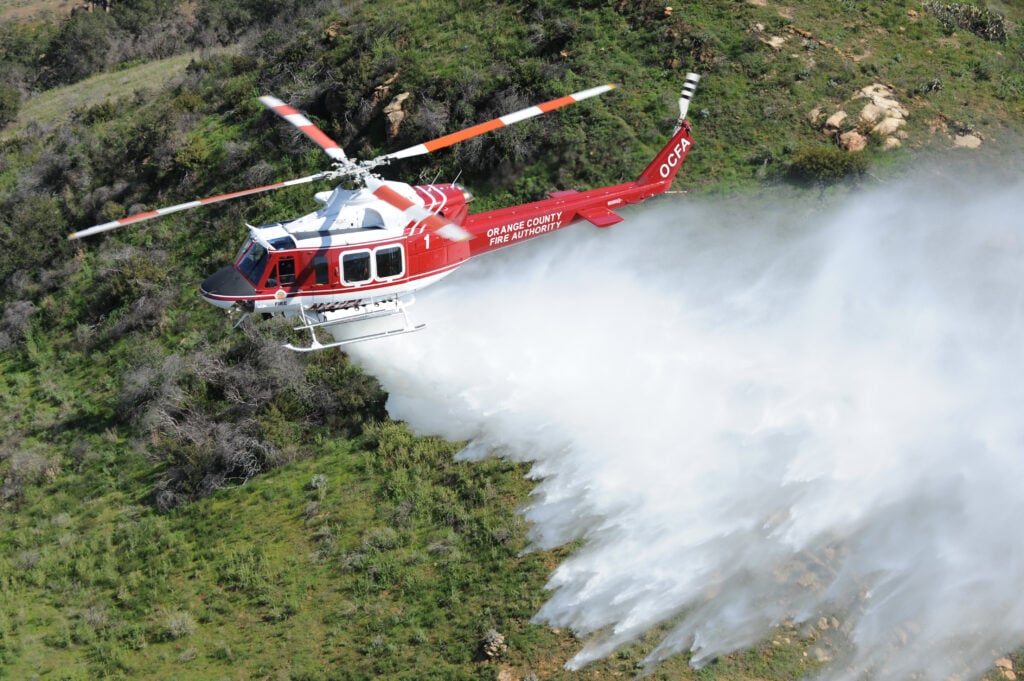
Firehawks of Los Angeles and Orange County
In addition to Cal Fire, the Los Angeles Fire Department and Orange County Fire Authority were two other government agencies that had their firefighting helicopters involved in battling the wildfires in Southern California in January 2025. The Los Angeles Fire Department (LAFD) has 17 helicopters, with 13 of them being airworthy in January 2025, while the Orange County Fire Authority (OCFA) has only four helicopters, with three of them being airworthy simultaneously. The LAFD has one of California's largest fleets of firefighting helicopters, which is crucial for dealing with wildfires in and around the US's second-largest city.
The LAFD has its helicopter fleet based at Van Nuys Airport, consisting of five Agusta Westland AW139s (replacing some of the older Bell 412s), two Bell 505 Jet Ranger Xs (used for fire mapping), three Bell 412EPs, two Bell 412HPs, three S-70As, and two S-70is. The Orange County Fire Authority (OCFA) has a significantly smaller fleet, comprising two Bell 412EPs and two S-70Ms based at Fullerton Municipal Airport.
During the firefighting operations, the LAFD used 13 airworthy helicopters, including four AW139s, two Bell 525s, two Bell 412EPs, two Bell 412EPs, two S-70As, and one S-70i, while the OCFA had one Bell 412EP and two S-70Ms involved. The OCFA's S-70Ms (N411FA and N412FA) have been in service since August 2024, replacing the Bell 412s that the Fire Authority had used for years. Despite their delivery, one of the Bell 412EPs remained airworthy during the Southern California fires. Unlike the Bell 412s, the S-70Ms of the OCFA have a Night Vision Goggle-compatible glass cockpit, allowing their crew to operate them at night safely.
According to flight tracking websites, one of the two S-70Ms of the OCFA was dedicated to dealing with the wildfire at Santa Monica Mountains National Recreation Area, while the other conducted missions mostly at Fremont Canyon Nature Reserve daily between January 9 and 13, as well as January 17 to 25. The sole airworthy Bell 412EP of the OCFA (N141FA) was seen performing missions mostly near residential areas such as Ladera Ranch and Lake Forest in the east and southeast of Irvine.
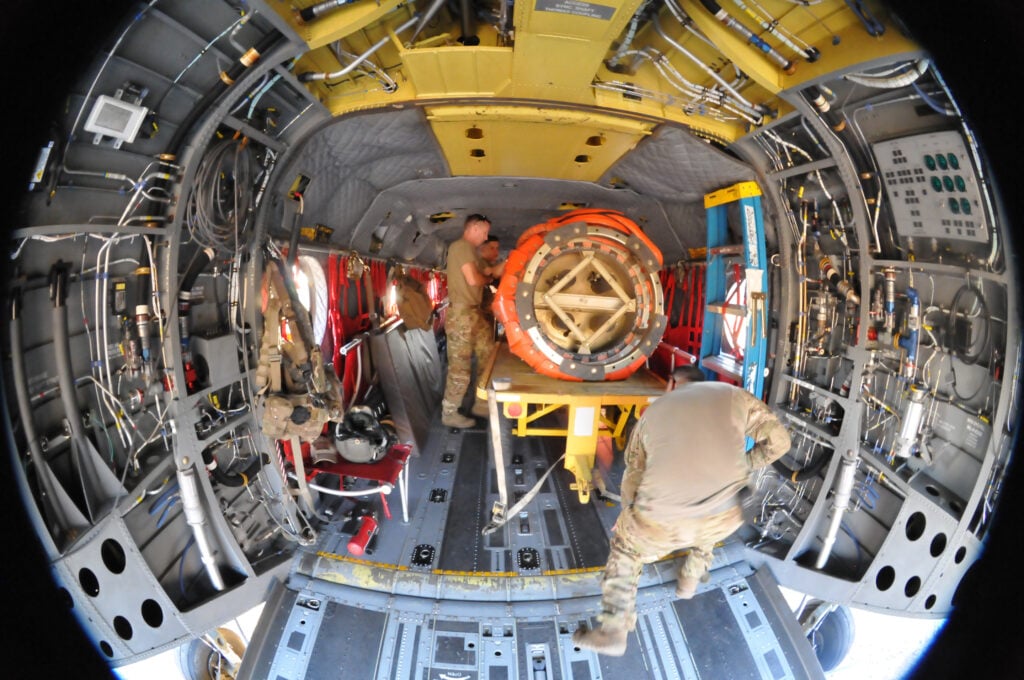
Black Hawks and Pave Hawks of the California National Guard in Action
Despite the higher availability of the LAFD and OCFA, there was a lack of enough airworthy air tankers with Cal Fire. This resulted in the initiation of programs to use the helicopters of the California National Guard for firefighting operations. Under the supervision and management of the Cal Fire Aviation Management Program, two regiments of the USARNG and a squadron of the USANG prepared twelve helicopters on January 8 and 9 for firefighting operations starting on January 9 and 10.
The use of Army and Air National Guard assets for firefighting occurred in conjunction with the FireGuard program, which started in 2019. The National Guard's FireGuard program has helped Guard members in California and Colorado detect and respond to wildfires, saving lives and property. FireGuard uses military satellites to detect wildfires, notify authorities, and create products to disseminate to firefighting networks nationwide.
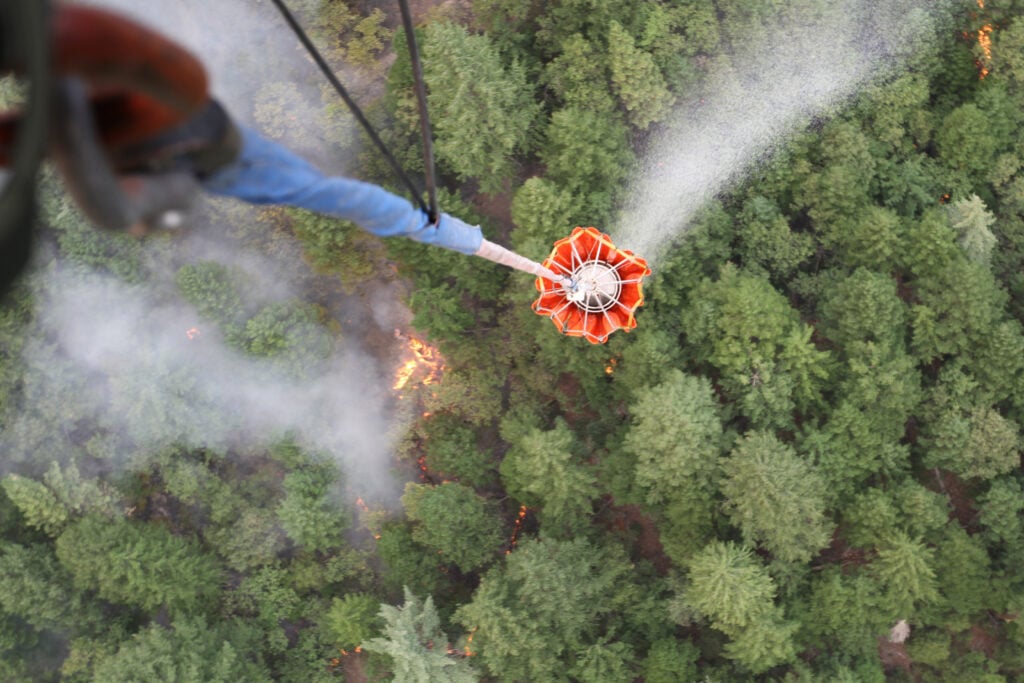
The FireGuard program includes two teams of Air Force and Army National Guard intelligence analysts, one in California and one in Colorado. They use the Firefly algorithm from the National Geospatial-Intelligence Agency (NGA) to interpret data from multiple sources and sensors, including imagery from satellites and drones. These products help generate overhead maps with polygons on top to depict fire-affected areas, providing updates to the firefighting community as often as every 15 minutes.
The 1st Assault Helicopter Battalion, 140th Aviation Regiment (1-140th AVN) of the USARNG's 40th Combat Aviation Brigade stationed at Joint Forces Training Base Los Alamitos, operates 20 UH-60M Black Hawks. They were one of three National Guard units ordered by the governor of California to prepare their helicopters to combat the massive wildfire. On January 8, 2025, eight UH-60Ms (17-20926, 17-20929, 17-20931, 17-20933, 17-20968, 18-20981, 18-20983 and 20-21168) were prepared for firefighting operations, receiving high visibility pink recognition stripes and their call-signs written on their fuselage.
The 1-140th AVN had its eight UH-60Ms flown to Camarillo airport in Northwest Los Angeles, where they joined four other helicopters in firefighting operations. Two CH-47F Chinook heavy transport helicopters of the 1st General Support Aviation Battalion, 126th Aviation Regiment (1-126th AVN) of the USARNG, and two HH-60G Pave Hawk combat search and rescue (CSAR) helicopters of the USANG's 129th Rescue Squadron were already deployed for firefighting on January 9 and 10.
The USANG's HH-60Gs and the USARNG's UH-60Ms were each loaded with Bambi buckets capable of carrying 780 gallons (2,952 liters) of water or fire-retardant. In comparison, the Chinooks were equipped with Bambi buckets capable of carrying 2,000 gallons (7570.824 liters). The Chinooks were involved in firefighting operations until January 13, when they returned to their home base, Stockton Metropolitan Airport. As of January 26, 2025, the HH-60Gs of the USANG remained involved in firefighting operations.
The USANG and USARNG initially fought fires in the Palisades region until January 13, then moved to battle fires in the city's southeast. After a wildfire erupted at the border with Mexico, three UH-60Ms (01-26885, 17-20931 and 18-20983) from 1-140th AVN were involved on January 26, 2025.
In addition to the USANG and USARNG, the US Navy also prepared ten helicopters to participate in firefighting operations in Southern California following an order issued by US President Joe Biden on January 8. Helicopter Sea Combat Squadron (HSC) 3 prepared ten MH-60S Knighthawk multi-mission helicopters. Twenty instructor pilots underwent training and preparation under several Cal Fire Firehawk pilots' supervision on January 9 and 10. Despite these preparations, the helicopters remained on standby and were not involved in firefighting operations.
Operated by Cal Fire, LAFD, OCFA, USANG, USARNG, Ventura County Fire Protection, and 17 privately owned companies, 66 firefighting helicopters were critical in combating the massive wildfires in Southern California during January 2025. Among these, 30 S-70 or UH-60 helicopters in various models formed the most common type of firefighting helicopter, used by both civilian and military forces involved in tackling the fires.








